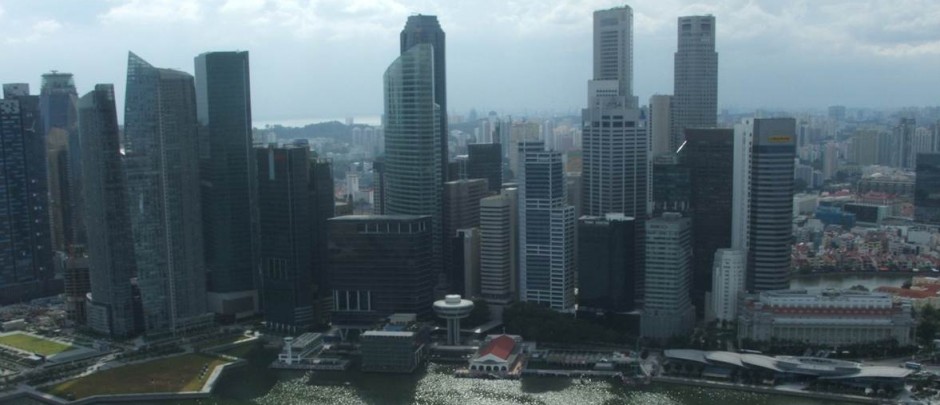The Presence of Cultural Identity in Singapore and Kuala Lumpur
White Team Research Proposal
Aim of the research
Singapore and Kuala Lumpur have both striven to create an identity as important global cities. Yet, while city leaders and business elites embrace the process and opportunity of globalization it is possible for individuals and communities to lose local ties and traditions. Our research aims to determine whether this tension is observable in both Singapore and Kuala Lumpur. Specifically, our project seeks to answer the following questions:
- How has globalization enhanced the visibility of a more Western identity in Singapore and Malaysia?
- Can specific non-western cultural identities be observed in the public spaces and urban fabric of Singapore and Kuala Lumpur?
- How are the observable representations of identity in Singapore’s built environment different from representations of identity in western cities?
Background
This is a unique topic to these two cities because they are both post-colonial urban areas and Singapore gained independence from Malaysia in the 1960s. Driven by globalization, both cities have expanded rapidly over the past half a century. Therefore Southeast Asian identities are of interest because we would like to determine if these specific identities are still present in Singapore and Malaysia, despite ties with the West and an increasing push for globalization. In reading for our Urban Studies classes at the University of Pittsburgh as well as through our own research and writing, we have seen a proliferation of literature on how Western practices have influenced Eastern notions of development and thus have changed identity in both Singapore and Kuala Lumpur, Malaysia. Examples of pieces of literature which discuss the effect of the West on urban practices in Southeast Asia include:
Bunnell, Tim, Kong, Lily, and Lisa Law. (2005) Social and Cultural Geographies of Southeast Asia. Social and Cultural Geography 6(1): 135-149.
Chong, Alan. (2007) Southeast Asia: theory between modernization and tradition. International Relations of the Asia-Pacific: 391-425.
Kong, Lily. (2012) Ambitions of a global city: arts, culture, and creative economy in ‘Post- Crisis’ Singapore. International Journal of Cultural Policy 18(3): 279-294.
Wee C. J.W. The Asian Modern Culture, Capitalist Development. Singapore, Hong Kong: Hong Kong, University Press, 2007.
Even though we have access to articles regarding culture and identity, it is still necessary to conduct fieldwork to determine if globalization has influenced Singapore and Malaysia enough to remove physical indicators of culture in each city.
Methodology
First, we will conduct a literature review to understand the history of ethnic relations in Singapore and Malaysia beyond the scope of the few pieces of literature we have collected thus far. In addition, this literature review will also help us to further understand influences of the West on Singapore and Kuala Lumpur. However, our primary research question requires observations in neighborhoods in Singapore and Malaysia to determine if the cultures read about in our literature review do represent themselves in public spaces. We want to look at both physical space and interactions between those who live in Singapore (Geylang Serai and Little India) and Kuala Lumpur (Chow Kit-Kampong Bahru). If we have the ability to talk to people about their neighborhood, we would like to incorporate that into our research as well because it could help us to determine how individuals identify themselves.
We plan to determine Western versus non-Western influences through observing what we know to be Western. For our research purposes, we plan to define Western as being familiar and Non-Western as unfamiliar. For example, we will make ourselves aware of fashion trends, styles of dress, technology trends, fast food restaurants, retail stores, the presence of Western cars, and music we hear in public spaces. We also plan to think and evaluate how foreign we feel as Westerners in certain neighborhoods with distinct cultures. For example, do we feel more out of place in Singapore’s Geylang Serai versus Little India and why? Finally, we also have the advantage of having Bonny in our group who is from Hong Kong. Bonny will be able to help us identify what she knows to either Western or Non-Western. Given that Bonny has lived in both the United States and Hong Kong, she can draw upon some of the similarities in neighborhoods. Using these three strategies, defining what is familiar, evaluating how comfortable we feel in certain neighborhoods, and having Bonny’s perspective, we plan to understand whether globalization has enhanced the visibility of a more western identity in Singapore and Kuala Lumpur.
Research Timetable
We have already completed a lot of research in class yet we will individually continue to find pieces of literature on cultural identity in Singapore and Malaysia to further our understanding before departure. Specifically, we will have to locate articles regarding cultural identity in Kuala Lumpur. We will remain in close contact between now and May 28th, to further shape our research and continue adapting our proposal. Yet, our observation regarding the physical presence of cultures in both cities will primarily take place during allotted neighborhood research days on May 30th and June 6th. In addition, during the three free days of May 31st, June 6th, and June 8th our group will keep our research questions in mind during exploring and leisure time. Then, our group will conclude with a presentation on June 10th while in Singapore. We have created a Google Doc where we can put notes from both our literature review and the field to effectively communicate ideas regarding our final paper. This Google Doc creates a “database” that we all have access to before, during, and after our trip. The notes in the Google Doc will be essential for writing our final group paper, which we plan to begin formulating while in Singapore. We plan to begin writing the paper during the week June 16th after we all return and recover from our trip.
